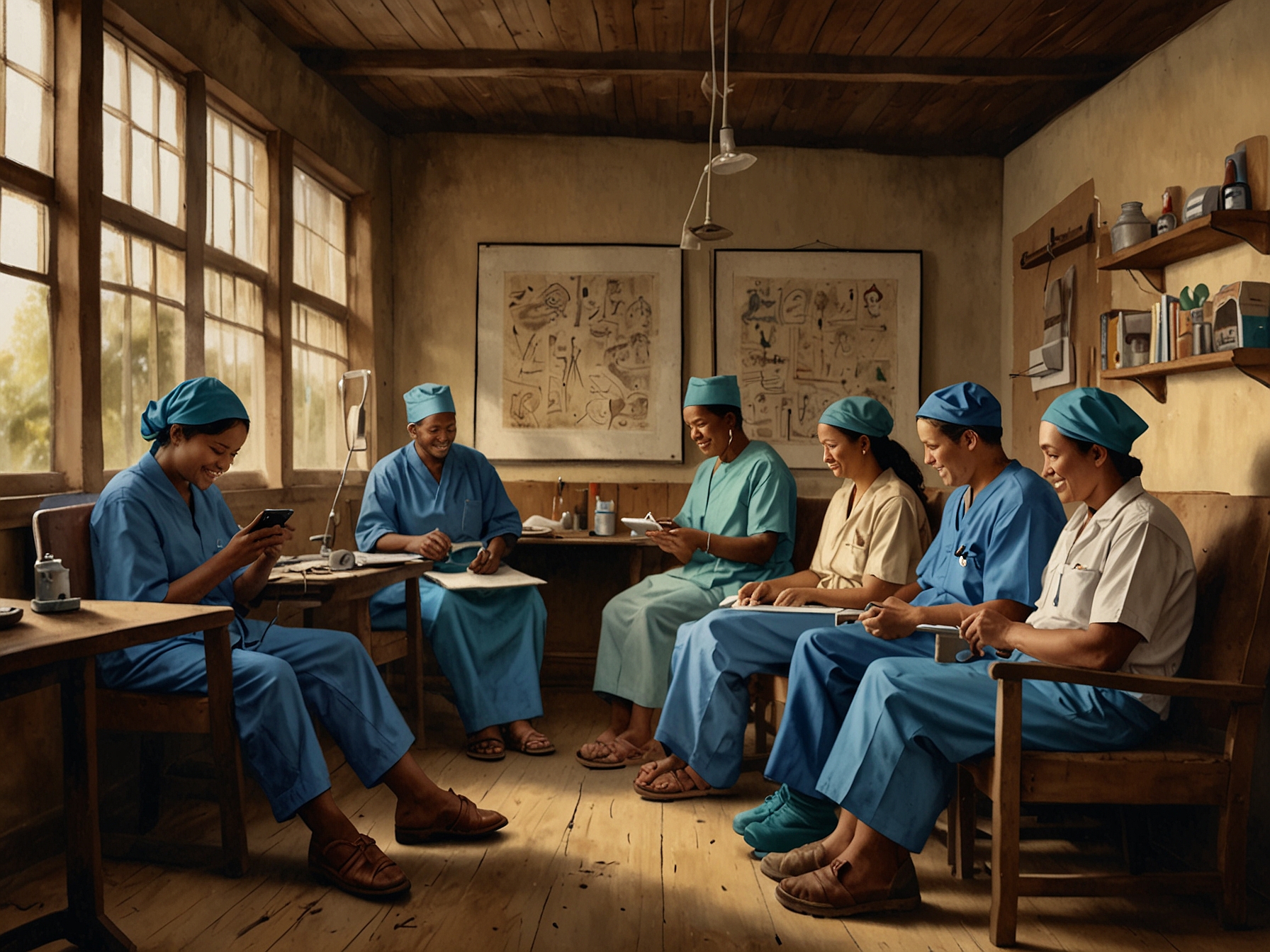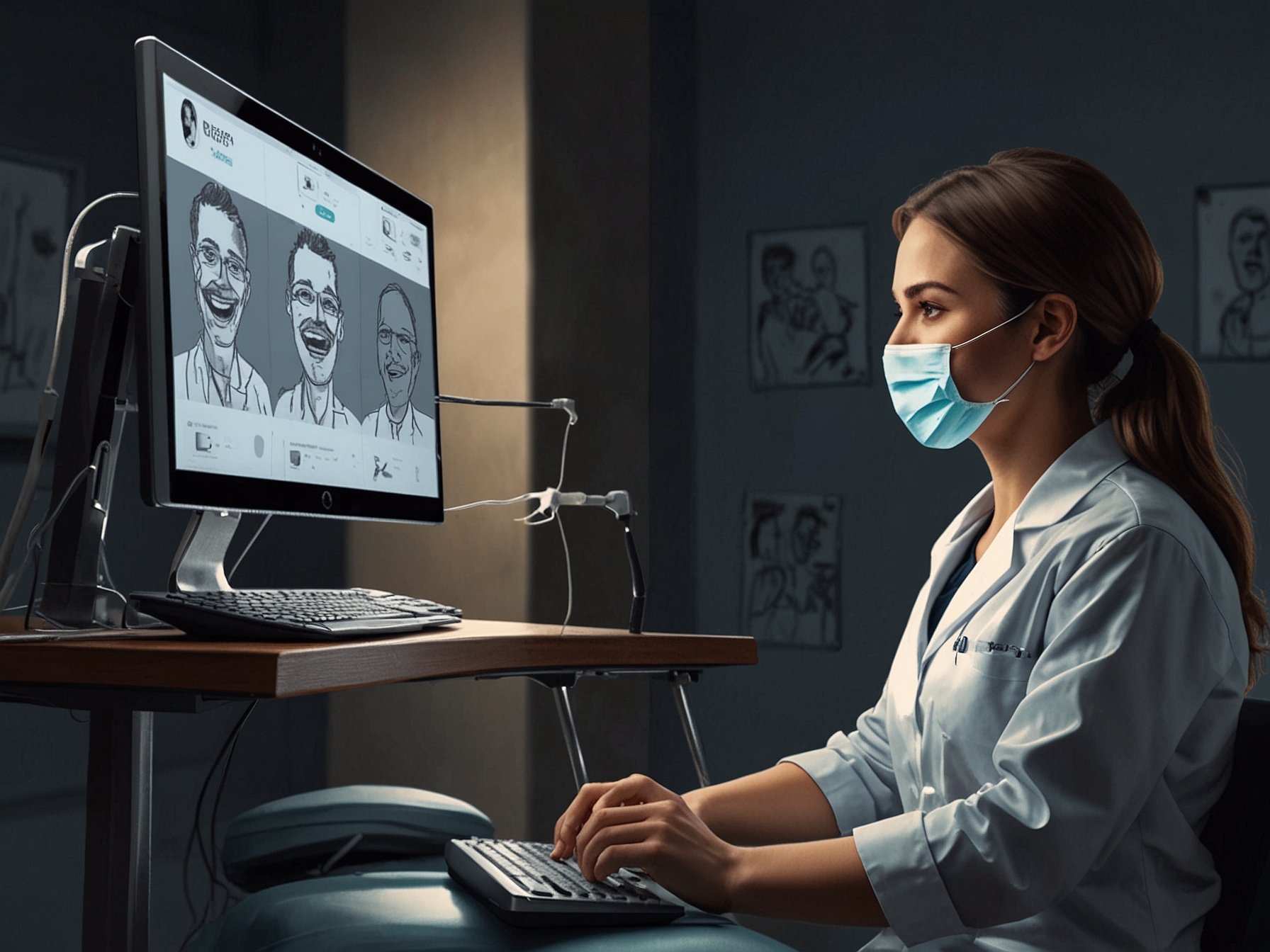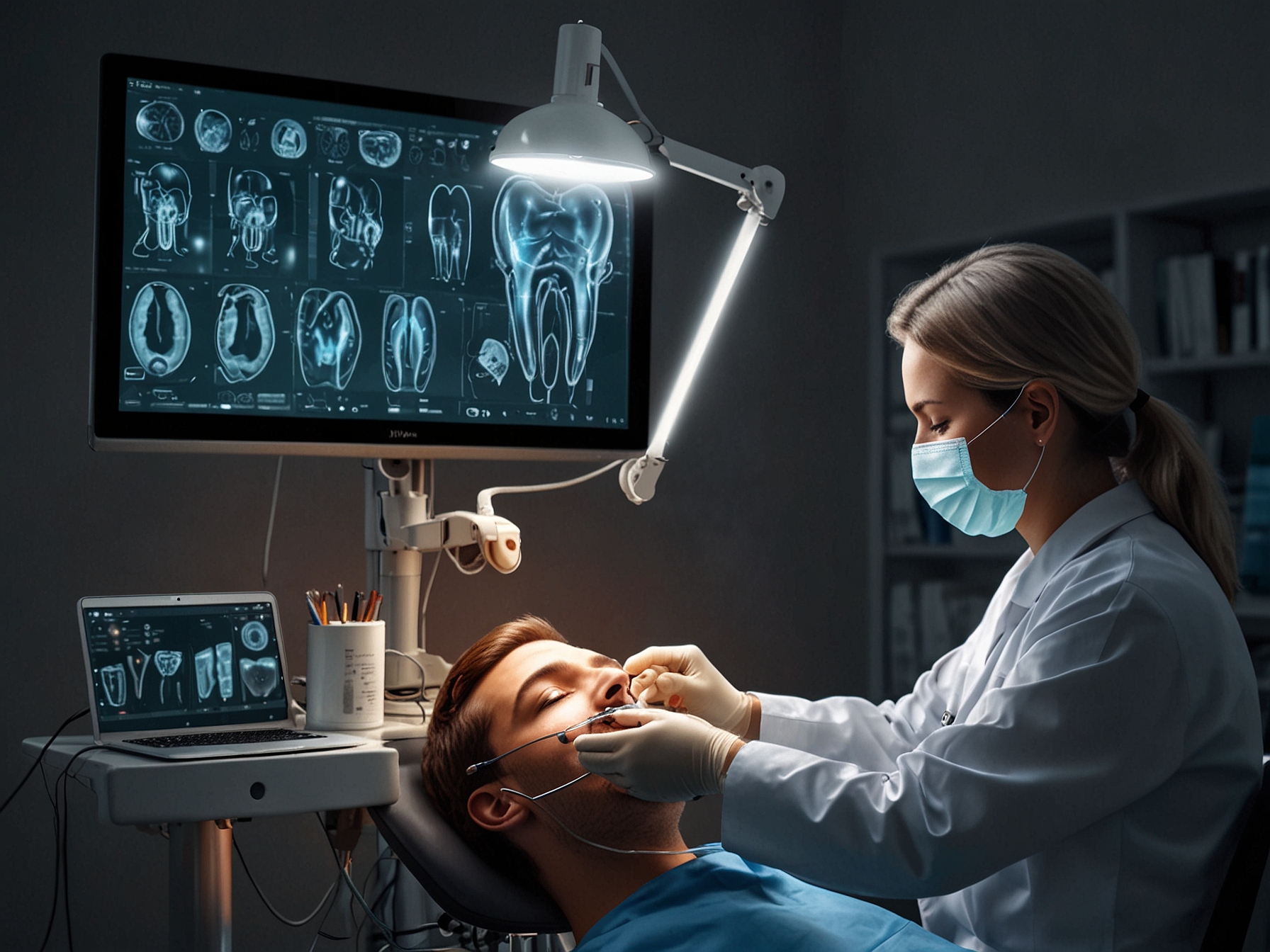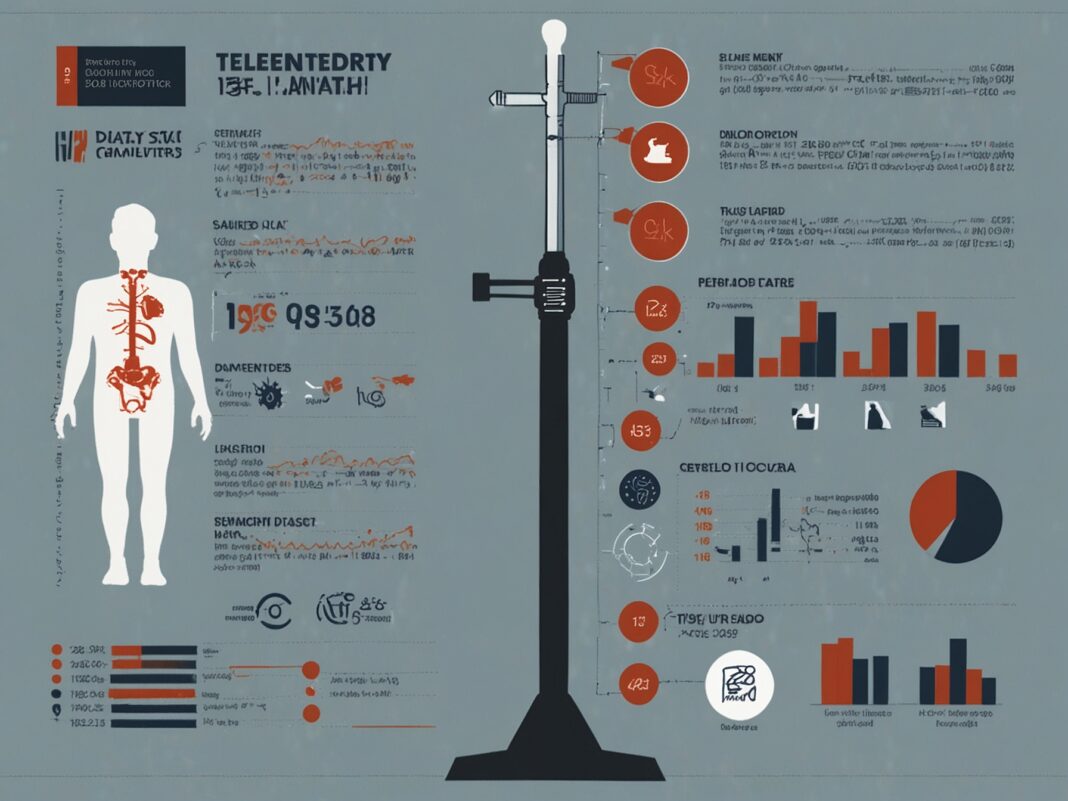Teledentistry is heading for a major makeover. According to Global Market Insights Inc., this will exceed the impressive USD 6 billion by 2032. It lets us know that real changes are afoot in dentistry.
But it’s worth noting one number in particular — the anticipated 16.5% compound annual growth rate (CAGR) from 2024 onward. It points to a healthy growth pattern in the innovation and utilization of digital dental services. So what is driving this amazing growth?
The rationale appears to be largely the desire for increased exposure to dental care in rural and underserved areas. Most dentists live miles away from their nearest counterparts. Even a routine visit can seem like scaling Everest.

© MondayBeast.Com – Images created and owned by MondayBeast, any use beyond the permitted scope requires written consent from MondayBeast
For example, in a remote area like a small town or farming community, the long journey just to see a dentist can be daunting. This circumstance is one of the leading reasons why serious pain or illness goes untreated—a fact that we cannot allow to continue. Teledentistry turns this narrative around.
These services are available so that patients can actually contact professionals via video calls or apps and receive advice from the dentist. It finally makes care more accessible and often less expensive, removing some of the greatest barriers to needed healthcare. A man can do a video call with a dentist, conveniently and quickly getting dental advice from home via technology.
In my view, technology is not only a set of tools but also a bridge to connect people. It’s a way of helping individuals find and link solutions in their care. It transforms lives imperceptibly and profoundly, illuminating where otherwise light has ceded to darkness.

© MondayBeast.Com – Images created and owned by MondayBeast, any use beyond the permitted scope requires written consent from MondayBeast
On top of that, the pandemic also facilitated a wider acceptance of telehealth services. Many patients they were looking after had become very familiar with online consultations, making dental care readily embraced. This caused something of a cultural shift, right?
This new era of technology gives rise to changes in the field of dental diagnostics. AI is going to be a game-changer. It helps professionals spot problems sooner and with more precision.
A demonstration of teledentistry processes involves sophisticated tools connected through AI technology to help dentists diagnose dental problems. Symptom evaluations do not always necessitate physical visits, as tele-dentists can assist in those situations. For instance, there are platforms specifically based on images that analyze cavities and gum disease.

© MondayBeast.Com – Images created and owned by MondayBeast, any use beyond the permitted scope requires written consent from MondayBeast
It is like carrying a state-of-the-art dental clinic in your pocket! Another thing to consider with teledentistry is personalization. All applications and available services can be personalized for each end-user according to their personal requirements.
This is not a one-size-fits-all solution. In my view, personalized care seems a lot more engaging. It makes patients feel known and valued. The healthcare experience changes significantly when we are recognized as individuals and not just a number.
Investing in digital infrastructure is a necessity given the statistics. As these gaps close with the deployment of technology in rural areas and among underserved populations, digital literacy also begins to spread. It’s a double-edged sword, though with a more positive side of the coin.

© MondayBeast.Com – Images created and owned by MondayBeast, any use beyond the permitted scope requires written consent from MondayBeast
This progress is accompanied by a greater awareness of oral health among communities. That information is now disseminated more broadly — across all groups, including those for whom it was previously unavailable. However, hurdles remain.
The equipment is not accessible to every advocate of avant-garde care. Digital divides continue even in developed countries. We must work to expand broadband to address that.
We all have a role to play in ensuring that all people, regardless of where they live, are able to receive medical treatment. Pause for a minute and reflect on it: what if we could access technologies like 5G in the remotest parts of the globe? In fact, it could transform the traditional healthcare delivery model by enabling remote and near-immediate access to dental professionals.
In summary, the growth predictions for the teledentistry market indicate a massive transition in the healthcare delivery landscape. It represents an era that is marrying technology, accessibility, and innovation in a critical field. The journey has a long way to go, but the steps taken are definitely commendable.
We are in an exciting time for dentistry, and there is no turning back. Smiles for millions, teledentistry is here to stay.




